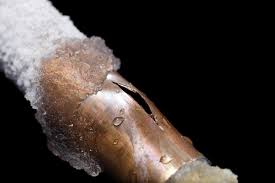|
|
|
Winter Tip
When away from the house for an
extended period
during the winter, be careful how much you lower the heat. A lower temperature may save on the heating
bill, but there could be a disaster if a
cold spell strikes and pipes that normally would be safe, freeze and burst.
|
|
|
|
|
ASSET PROTECTION NEWSLETTER
Protect Your Home During Freezing Weather
|
We hope you had a happy holiday season and are ready to begin a prosperous 2015. As you know, our winters have been more severe recently and have caused more property damage due to freezing conditions. We hope this month's newsletter will help you prepare your home and other property for this season's severe weather.
Thank you for allowing us to help you with your insurance needs.
Be sure to connect with us on Facebook and Twitter for great personal and business asset protection tips.
Joey Huckaby
|
Freezing and Bursting Pipes
Surprisingly, ice forming in a pipe does not typically cause a break where the ice blockage occurs. It's not the radial expansion of ice against the wall of the pipe that causes the break. Rather, following a complete ice blockage in a pipe,  continued freezing and expansion inside the pipe causes water pressure to increase downstream -- between the ice blockage and a closed faucet at the end. It's this increase in water pressure that leads to pipe failure. Usually the pipe bursts where little or no ice has formed. Upstream from the ice blockage the water can always retreat back towards its source, so there is no pressure build-up to cause a break. Water has to freeze for ice blockages to occur. Pipes that are adequately protected along their entire length by placement within the building's insulation, insulation on the pipe itself, or heating, are safe. |
What To Do During
Freezing Temperatures
Water damage from frozen pipes that burst can be a major problem for homeowners in southern states, maybe even a bigger problem than in the colder north.
Home builders in the south often do not consider the threat of freezing weather and thus place water pipes in vulnerable locations. In addition, houses built on slab foundations, common in the south, frequently have water pipes running through the attic, an especially vulnerable location. In the north, by contrast, home builders know freezing is a threat, and they usually do not place water pipes in unheated portions of a building or outside of insulated areas.
|
Thank you for allowing Huckaby and Associates to help you with your insurance needs.
Sincerely,
Joey Huckaby |
|
|
|
|
|
|
|
Copyright © 2012. All Rights Reserved.
|
|
|